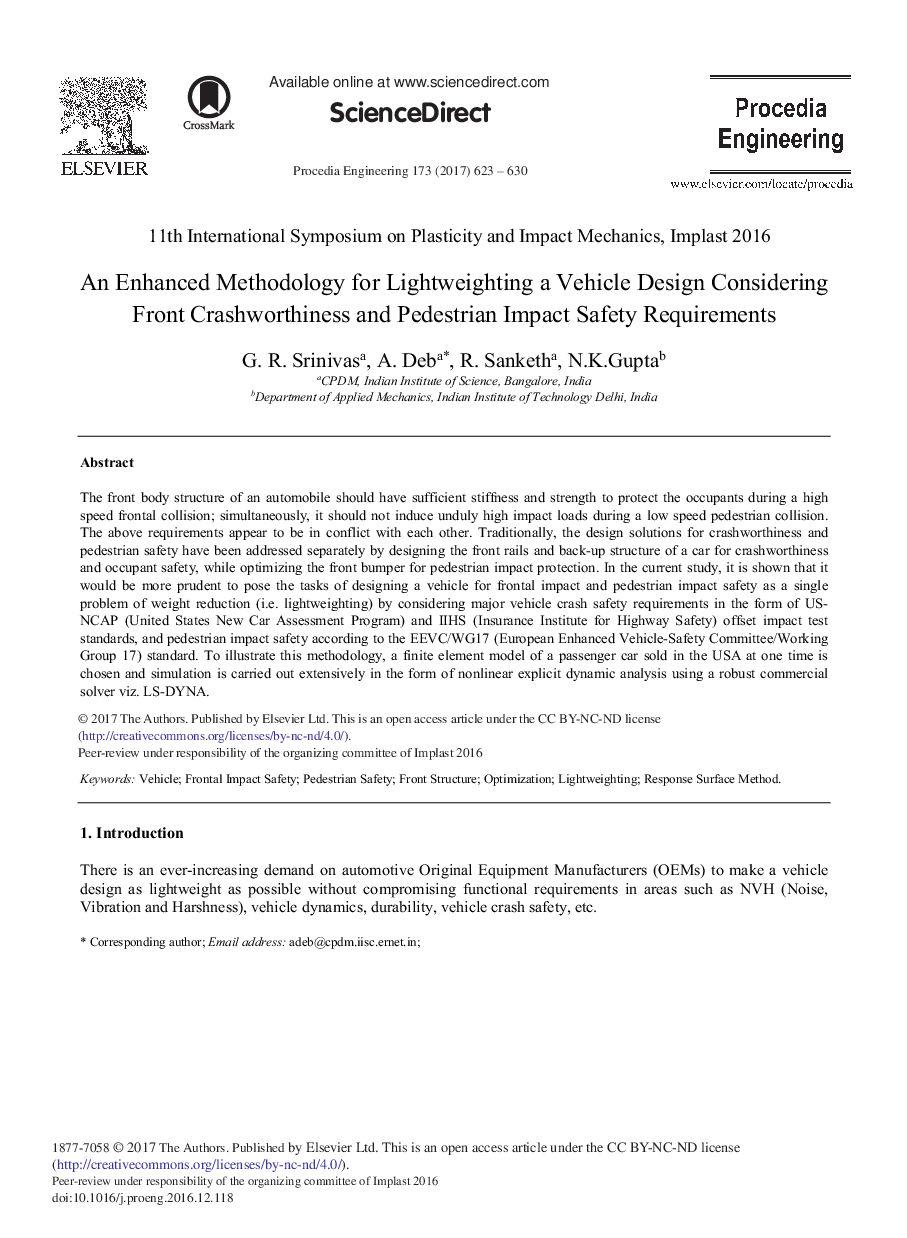| Article ID | Journal | Published Year | Pages | File Type |
|---|---|---|---|---|
| 5028355 | Procedia Engineering | 2017 | 8 Pages |
The front body structure of an automobile should have sufficient stiffness and strength to protect the occupants during a high speed frontal collision; simultaneously, it should not induce unduly high impact loads during a low speed pedestrian collision. The above requirements appear to be in conflict with each other. Traditionally, the design solutions for crashworthiness and pedestrian safety have been addressed separately by designing the front rails and back-up structure of a car for crashworthiness and occupant safety, while optimizing the front bumper for pedestrian impact protection. In the current study, it is shown that it would be more prudent to pose the tasks of designing a vehicle for frontal impact and pedestrian impact safety as a single problem of weight reduction (i.e. lightweighting) by considering major vehicle crash safety requirements in the form of US-NCAP (United States New Car Assessment Program) and IIHS (Insurance Institute for Highway Safety) offset impact test standards, and pedestrian impact safety according to the EEVC/WG17 (European Enhanced Vehicle-Safety Committee/Working Group 17) standard. To illustrate this methodology, a finite element model of a passenger car sold in the USA at one time is chosen and simulation is carried out extensively in the form of nonlinear explicit dynamic analysis using a robust commercial solver viz. LS-DYNA.
